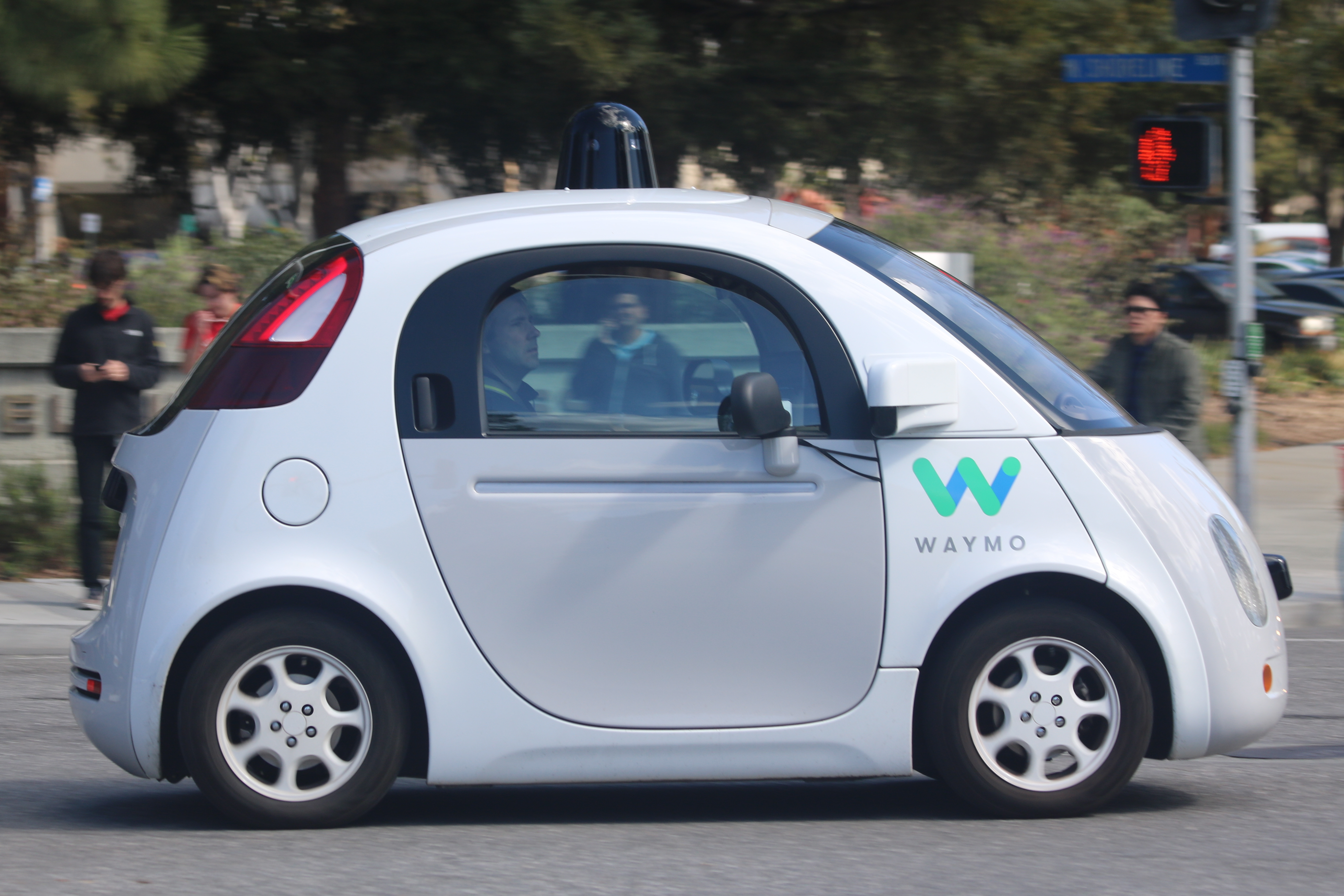
In the vibrant streets of San Francisco, where autonomous vehicles share the roads with pedestrians, crossing guards are voicing serious concerns about the safety of Waymo’s driverless cars. These vigilant guardians, dedicated to ensuring the safe passage of families and children across bustling intersections, have reported numerous alarming near misses involving Waymo vehicles. Among them is Theresa Dorn, a crossing guard with over a decade of experience, who recalls the heart-stopping moments she had to leap out of the way to avoid a potential collision. ‘I just don’t think it’s very safe,’ Dorn remarked, shedding light on the precarious situation for pedestrians as self-driving cars navigate nearby. This issue becomes even more pressing when you consider that nearly one in four crossing guards interviewed by NBC News reported experiencing similar close calls, highlighting the urgent need for improved safety measures.

These near misses are more than just isolated incidents; they reveal a growing distrust in the safety of autonomous vehicles. Many crossing guards have expressed feelings of unease while performing their important roles, with several reporting multiple near-miss occurrences. ‘It did not recognize me in the intersection,’ Dorn highlighted, pointing out a critical flaw in the technology employed by these self-driving cars. This sentiment reflects a broader narrative about the deployment of autonomous vehicles in urban settings, where the interaction between pedestrians and advanced technology requires careful consideration.

Analyzing these near misses sheds light on the significant challenges faced by autonomous vehicle technology. Waymo asserts its commitment to safety, boasting an impressive safety record, yet the experiences shared by crossing guards reveal a concerning gap between the technology’s capabilities and the realities faced by pedestrians on the streets. As Waymo persists in operating its driverless vehicles in San Francisco, the pressing question remains: can these cars reliably detect and appropriately respond to pedestrians in real-world scenarios?

Additionally, NBC Bay Area’s investigation sheds light on the broader implications of these near misses by revealing that the California Department of Motor Vehicles (DMV) received over 200 complaints regarding driverless cars in 2023, with a significant portion tied to Waymo. The details of these complaints often revolve around safety concerns in crosswalks, where individuals reported almost being struck by driverless vehicles. The urgency of these concerns cannot be understated, as crossing guards play a vital role in ensuring the safety of children and families navigating the streets.

The narratives shared by crossing guards not only paint a picture of the immediate dangers present at crosswalks but also raise larger questions about the deployment of autonomous vehicles in urban environments. The incidents reported by crossing guards reveal an unsettling trend: while autonomous vehicles promise to reduce accidents caused by human error, the technology is still grappling with the complexities of real-world traffic scenarios.

Amidst the evident risks, some crossing guards paradoxically find a sense of reassurance when it comes to driverless vehicles. ‘I’ve almost been hit by parents, not driverless cars,’ one crossing guard shared, illustrating that perceptions of safety can be complex and vary based on individual experiences. This perspective fuels the ongoing debate about the reliability of human drivers compared to their autonomous counterparts, a conversation that is essential as society transitions towards self-driving technology.

With Waymo’s expansion, the challenge persists to find a harmonious balance between advancing technology and ensuring public safety. The experiences shared by crossing guards emphasize the urgent need for greater awareness and for technology that genuinely prioritizes pedestrian safety. As autonomous vehicles become more common, it is crucial to foster ongoing discussions about their safety, promoting collaboration between technology developers and community members to create a safer environment.

The discussion surrounding Waymo’s near misses prompts critical inquiries about the future of autonomous vehicles and the regulatory frameworks that will govern them. Delving deeper into this intricate topic makes it clear that understanding Waymo’s actions and the broader calls for regulation are vital for ensuring public safety in the era of driverless technology. Here are some additional key themes worth exploring:
1. **Waymo’s Safety Record**: In response to crossing guard concerns, Waymo maintains that its vehicles are statistically safer than those driven by humans. The company emphasizes its dedication to safety, reporting significant reductions in injuries and crashes compared to human-operated vehicles. Advocates argue that autonomous vehicles, equipped with cutting-edge sensors and AI, have the potential to eliminate many human errors that lead to accidents.

2. **The Importance of Data Transparency**: A major point of contention is the limited data shared by autonomous vehicle companies regarding near-misses. Currently, companies are only required to report actual collisions, leaving a substantial gap in understanding the safety of these vehicles. Enhanced reporting requirements could lead to more informed regulations and improve public trust in autonomous technology.

3. **Public Sentiment and Trust Issues**: Crossing guards and residents express a mix of fear and cautious optimism towards self-driving cars. Some individuals, like Theresa Dorn, voice their concerns, stating, ‘I just don’t think it’s very safe.’ Others, however, report feeling reassured, suggesting that driverless cars might be safer than their human counterparts. This duality of sentiment highlights the need for ongoing public engagement and transparent dialogue regarding the technology.

4. **Regulatory Challenges**: As autonomous vehicles become more prevalent, the regulatory landscape struggles to keep pace. U.S. Rep. Kevin Mullin has emphasized the necessity for comprehensive regulations that account for the unique challenges posed by driverless technology. The push for regulatory reform reflects a broader acknowledgment of the need to prioritize public safety and mitigate potential risks associated with self-driving cars.

5. **Technological Advancements and Limitations**: While the promise of autonomous vehicles offers a glimpse into the future of transportation, they are not without significant limitations. For example, incidents where vehicles fail to recognize pedestrians illustrate the technological challenges that need to be addressed. Ongoing improvements in software and machine learning algorithms are crucial to enhance the ability of these vehicles to safely interact with pedestrians and cyclists alike.

6. **Community Involvement in Regulation**: The voices of crossing guards and local communities are crucial in shaping regulations. Lawmakers and regulators should prioritize input from those directly impacted by autonomous vehicle operations to ensure that safety measures are practical and effective. This participatory approach can foster trust between residents and technology providers.

7. **Educational Initiatives**: As self-driving cars become increasingly integrated into our daily lives, educational programs directed at both the public and industry stakeholders can help bridge the knowledge divide. By educating communities about how these vehicles function and the safety protocols they follow, we can better navigate the transition to this new technology.

8. **Future of Urban Mobility**: The ongoing discussions regarding Waymo and other autonomous vehicle operators are part of a larger conversation about the future of urban mobility. As cities evolve, the integration of smart transportation solutions, including driverless cars, presents opportunities and challenges. Policymakers must consider how these vehicles will coexist with existing traffic systems and pedestrian infrastructure to create safer urban landscapes.

While Waymo’s near-misses raise substantial concerns about the safety of autonomous vehicles, they also highlight the potential for innovation and improvement in urban transportation. As the conversation progresses, it is crucial for all stakeholders to engage actively in discussions regarding regulation, technology, and public safety. The journey ahead is not solely about technological progress; it must also ensure that these innovations translate into tangible safety and trust for all road users. Through thoughtful regulation, transparent data sharing, and continual community dialogue, we can navigate the intricacies of this evolving landscape, striving towards a future where self-driving technology enhances both safety and mobility for everyone.
Related posts:
Crossing guards say driverless cars nearly hit them in crosswalks
School crossing guards say they’ve had to dodge driverless cars to avoid being hit
Viral video shows Waymo driverless car in Phoenix struggling to stay in its lane




